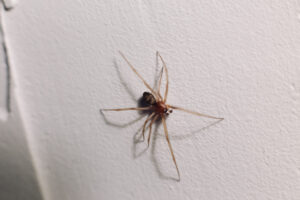In the intricate tapestry of our ecosystem, every creature has a role to play. However, when certain species, such as mice, come into close contact with humans, they can pose significant health risks due to their ability to carry and transmit various diseases. As a professional exterminator, I am acutely aware of the crucial role we play in preventing disease outbreaks that can stem from mice infestations. In this article, we will explore the multifaceted responsibilities of exterminators in safeguarding public health by effectively managing and eliminating mice infestations.
Understanding the Disease Threat
Mice may appear innocent and inconspicuous, but they are far from harmless. These small rodents can carry a plethora of pathogens, making them a potential source of various diseases. From the deadly hantavirus to bacterial infections like leptospirosis and foodborne illnesses like salmonellosis, the diseases transmitted by mice can have severe implications for human health. Exterminators are not just dealing with pests; they are on the front lines of disease prevention.
Early Detection and Intervention

Do you see mice near your property?
One of the primary responsibilities of an exterminator is early detection and intervention. Recognizing the signs of a mouse infestation is not just about eradicating nuisances; it is about nipping a potential health crisis in the bud. Exterminators are trained to identify the telltale signs of mouse activity, from droppings and gnaw marks to nests and urine odors. By swiftly intervening at the first signs of infestation, exterminators can prevent disease-carrying mice from establishing a foothold in homes, businesses, and public spaces.
Tailored Strategies for Elimination
Every situation is unique, and effective mouse control requires a tailored approach. Exterminators utilize a range of strategies to eliminate mouse infestations while considering the specific environment and circumstances. From traps and baits to exclusion methods that seal off entry points, exterminators craft comprehensive plans to address the infestation at its root. By employing these strategies, they not only remove the immediate threat but also curtail the potential for disease transmission.
Sanitation and Education
Exterminators do more than just remove mice; they play an active role in educating clients about the importance of sanitation and proper pest prevention practices. Keeping areas clean and free of food debris is crucial to reducing the attractiveness of a space to mice. Additionally, exterminators educate clients about the dangers of leaving food sources accessible and the significance of proper waste management. Through these efforts, exterminators empower clients to actively participate in disease prevention, creating a collaborative approach to safeguarding public health.
Preventing Secondary Infestations
Mice are remarkably adaptable creatures, and their ability to reproduce rapidly can lead to secondary infestations if not addressed comprehensively. Exterminators understand the importance of not only eliminating existing mice but also preventing future infestations. This often involves sealing entry points, fixing structural vulnerabilities, and recommending changes that discourage mice from returning. By breaking the cycle of infestations, exterminators contribute to long-term disease prevention.
Risk Communication
In the face of a potential disease outbreak, effective communication is paramount. Exterminators possess the expertise to communicate the risks associated with mice infestations to clients in a clear and understandable manner. They explain the potential diseases that can be transmitted, the mode of transmission, and the urgency of eradication. By fostering awareness, exterminators help clients make informed decisions that prioritize health and safety.
Collaboration with Public Health Agencies
Exterminators are not isolated entities; they often collaborate with local public health agencies to address larger-scale infestations that can have community-wide health implications. In cases of severe infestations, exterminators may work in tandem with public health officials to implement comprehensive control measures. This collaboration ensures a coordinated response that aims to mitigate the potential for disease outbreaks on a broader scale.




